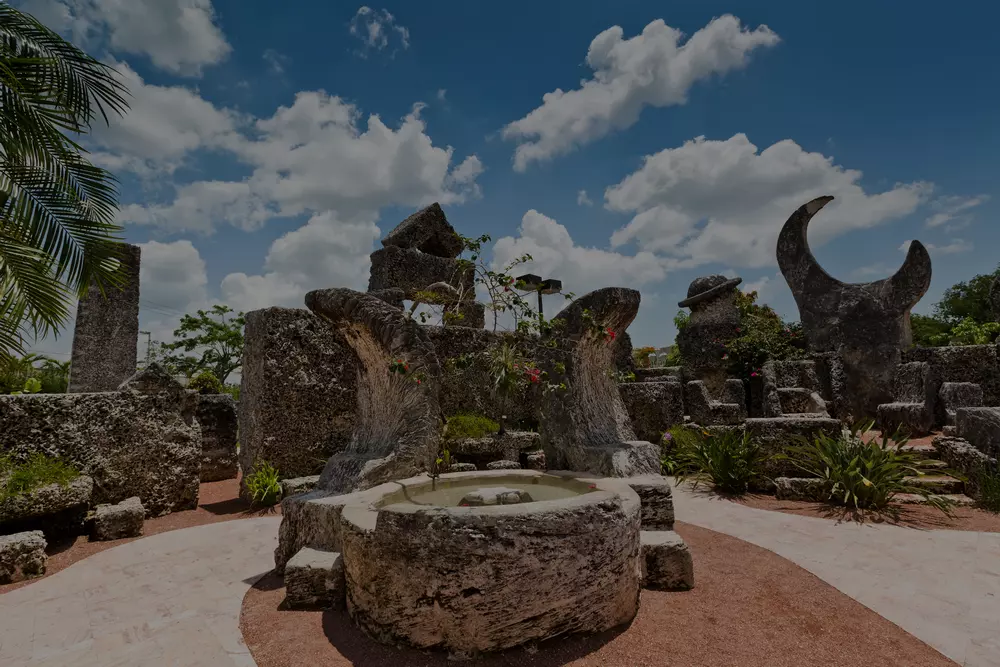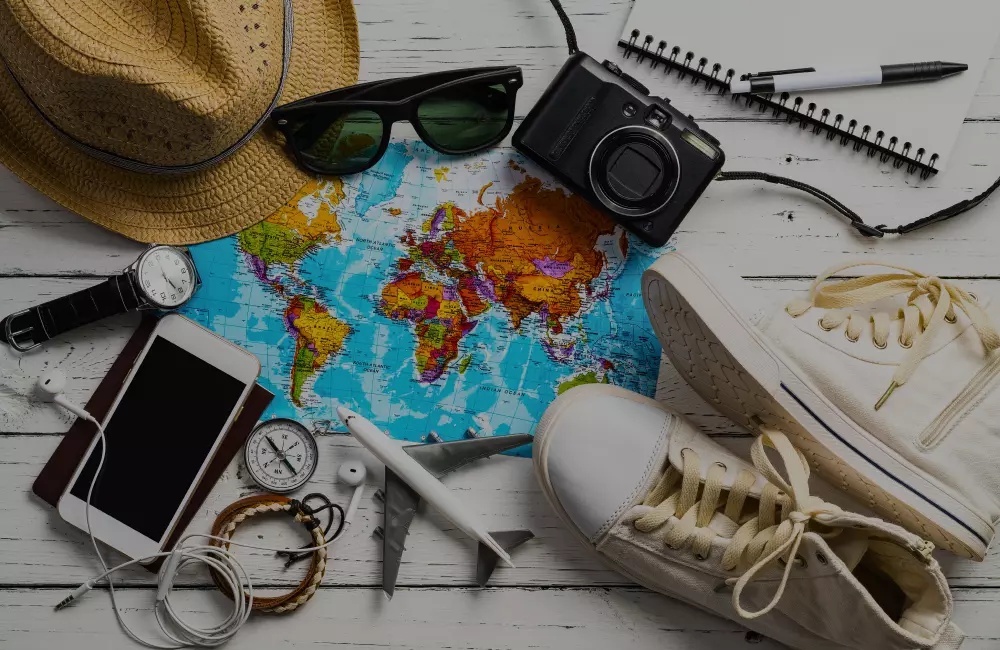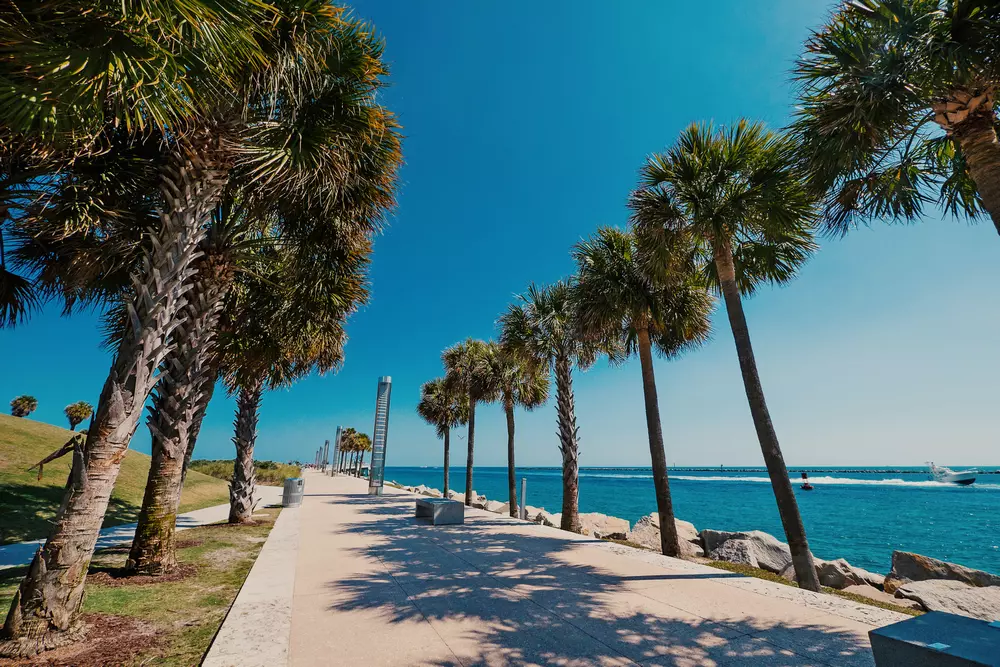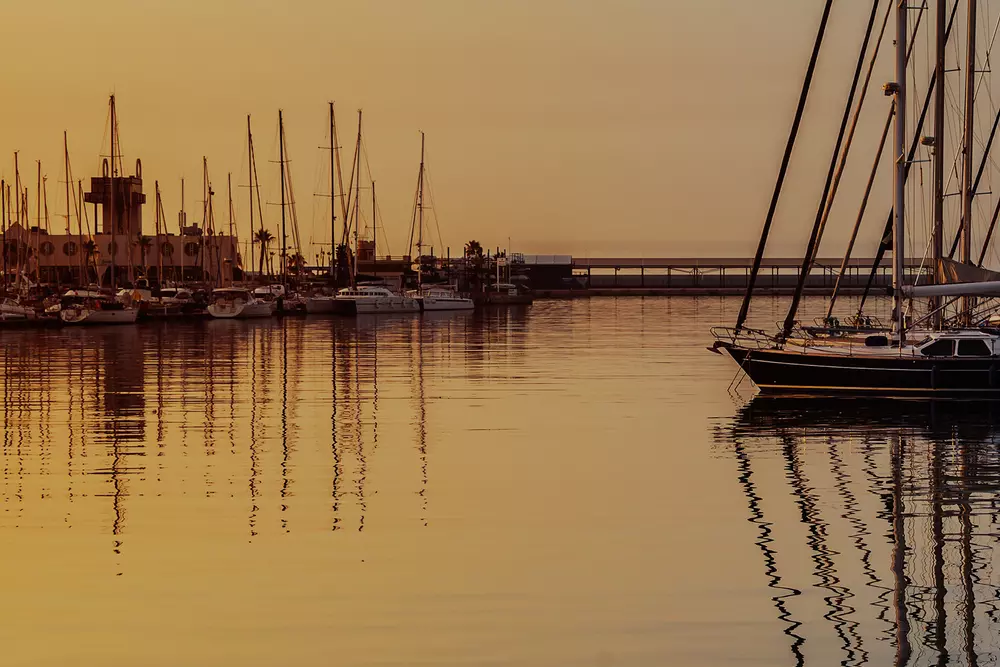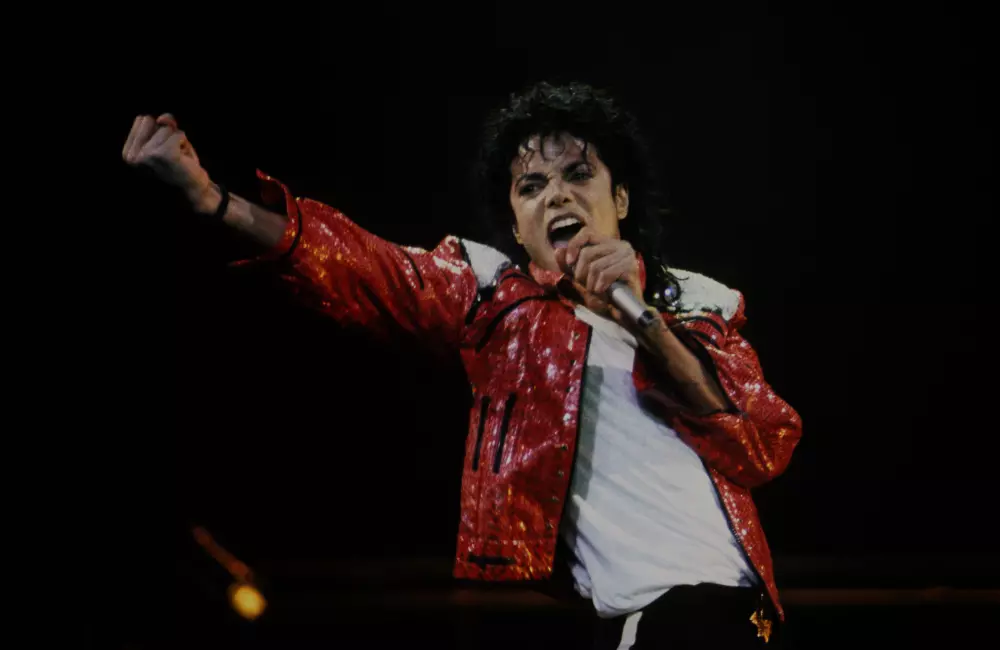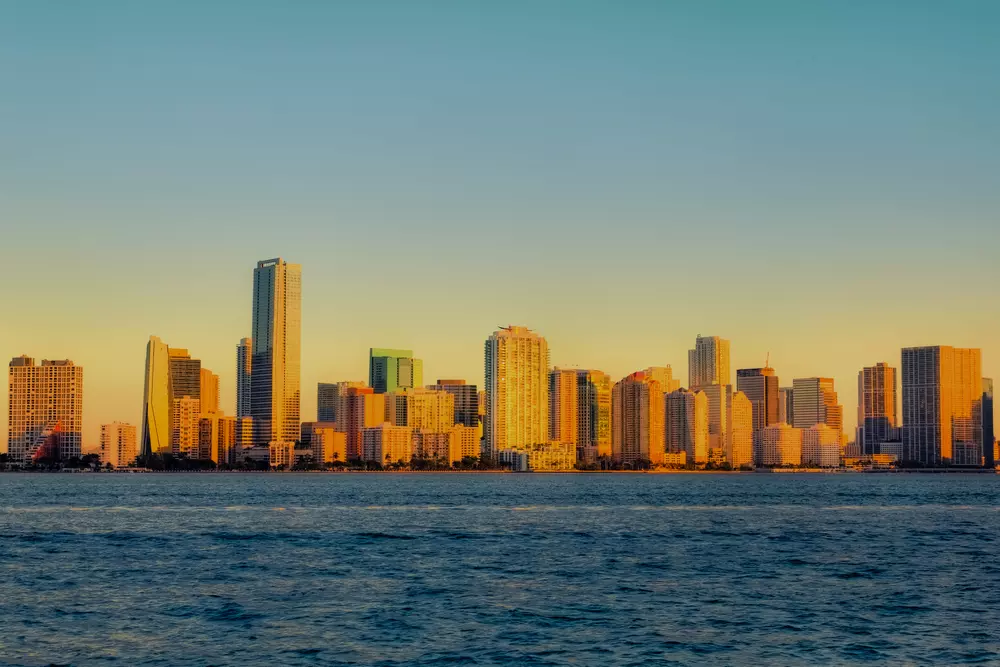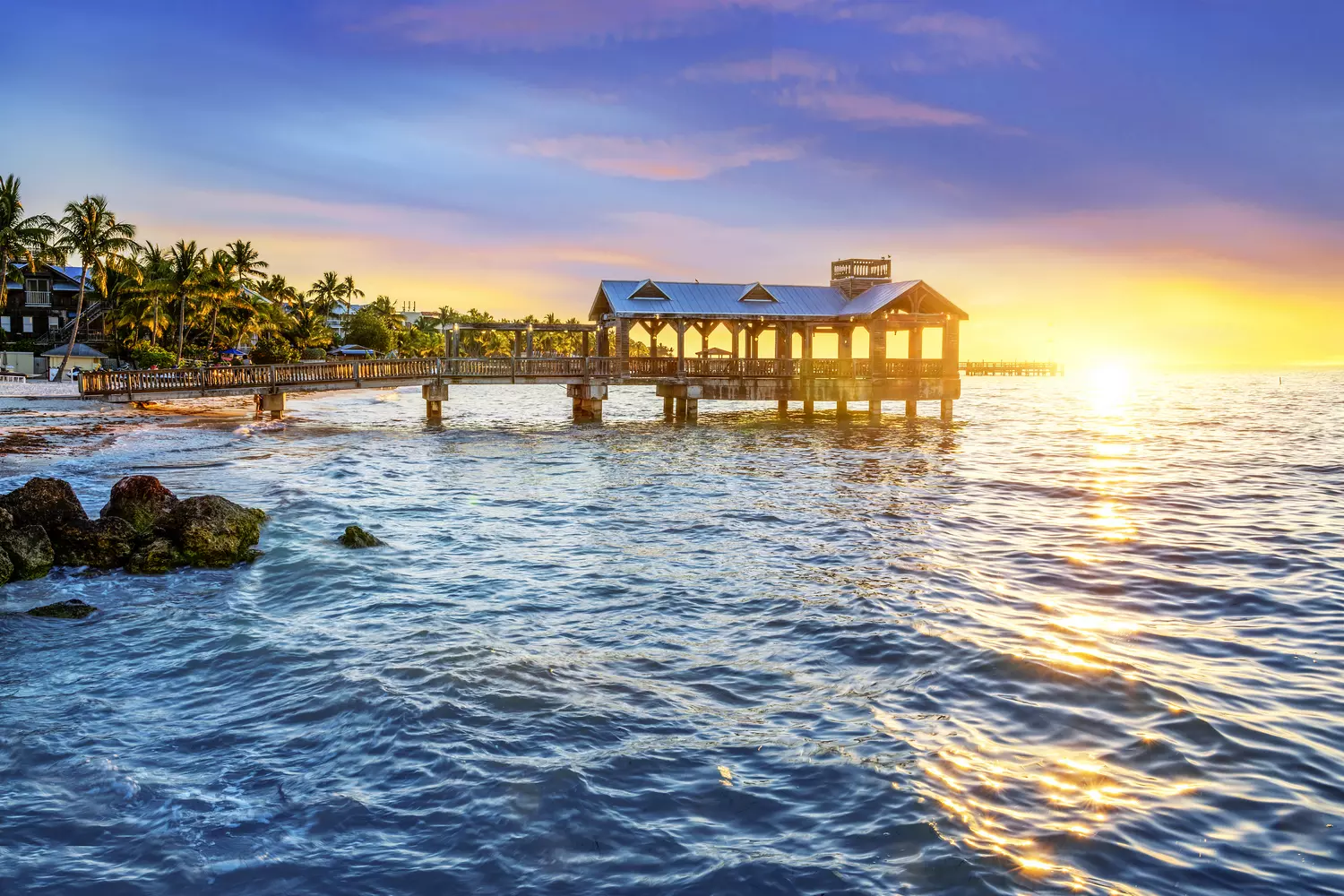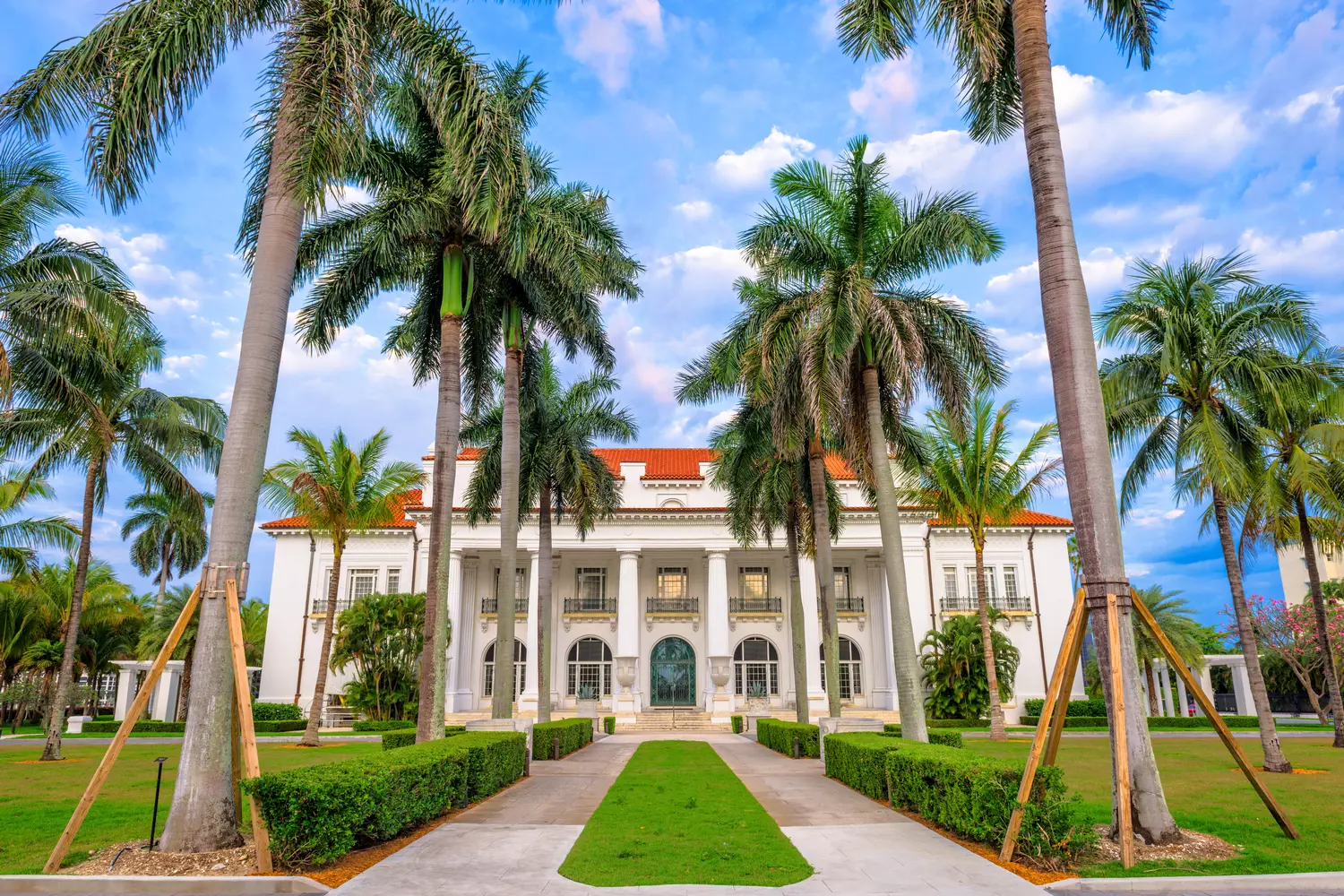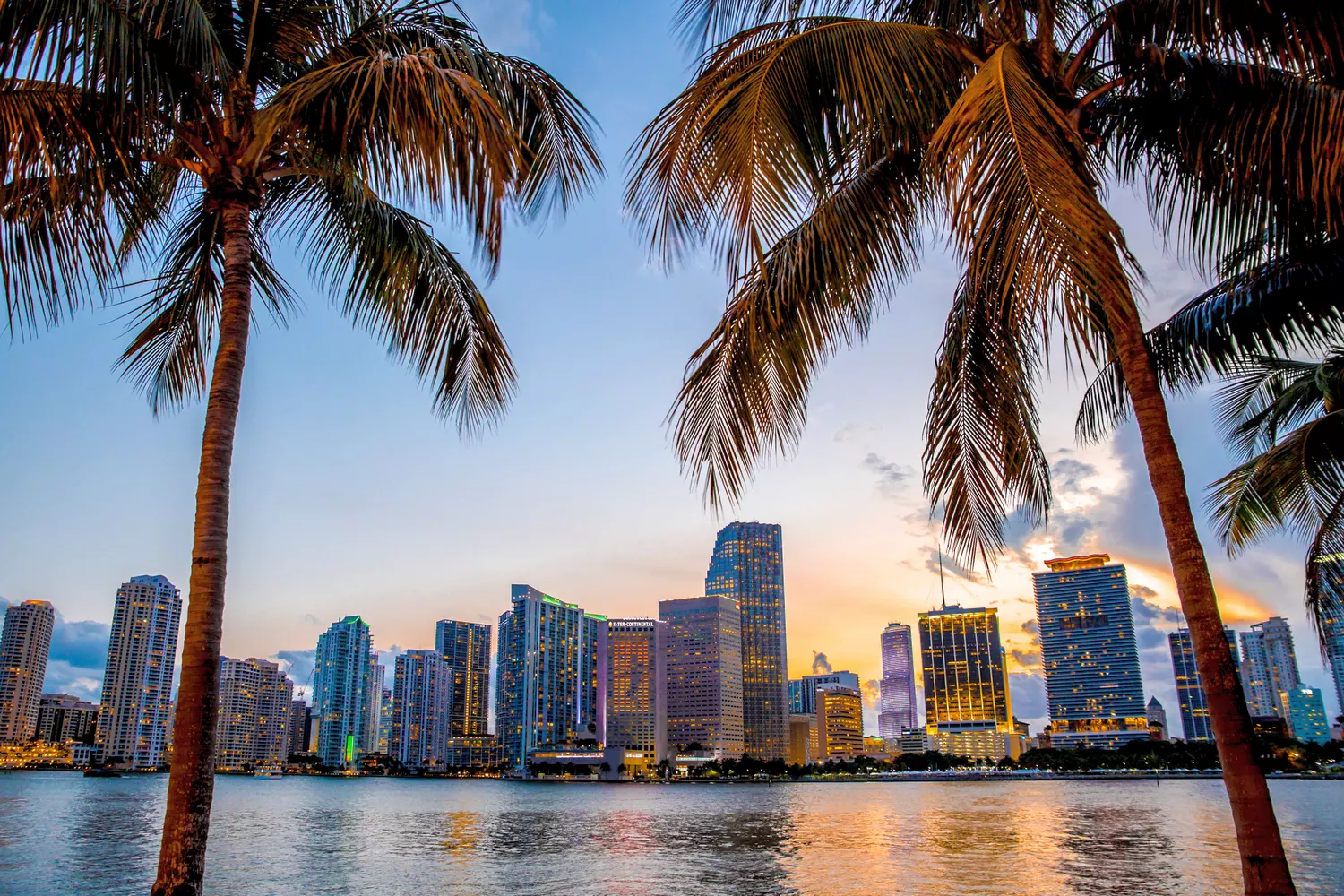Miami and Miami Beach today are a vibrant tapestry of soaring skyscrapers, a warm ocean, Latin music, and endless beaches. But it wasn't always this way. Once, these lands were home to Native American tribes, followed by the arrival of the Spanish, railroad builders, hoteliers, and immigrants from all corners of the globe. In just over a century, a city known worldwide has risen here. In this article, we will explore how Miami transformed from a wild territory into the cultural capital of the Southern USA, and Miami Beach into one of the most recognizable resorts in the world.
Prehistoric Period and Native American Tribes
Long before the arrival of the first settlers and tourists, the territory of modern Miami was inhabited by indigenous peoples. Archaeologists believe that humans lived here over ten thousand years ago. This is evidenced by found tools, pottery, and the remains of primitive dwellings.
The primary tribe that resided in these lands for many centuries was the Tequesta. They settled along the coast and river mouths, where there was ample fish, fresh water, and wild plants. The Tequesta did not engage in agriculture, as the local soils were too wet. However, hunting, fishing, and gathering sustained the tribe year-round.
They built huts from palm leaves and wood, and used canoes hollowed out from entire tree trunks. For communication with other tribes, they utilized coastal routes and rivers. Neighboring peoples, such as the Calusa, also left a notable mark on the region's history, but it is the Tequesta who are considered the indigenous population of the future Miami area.
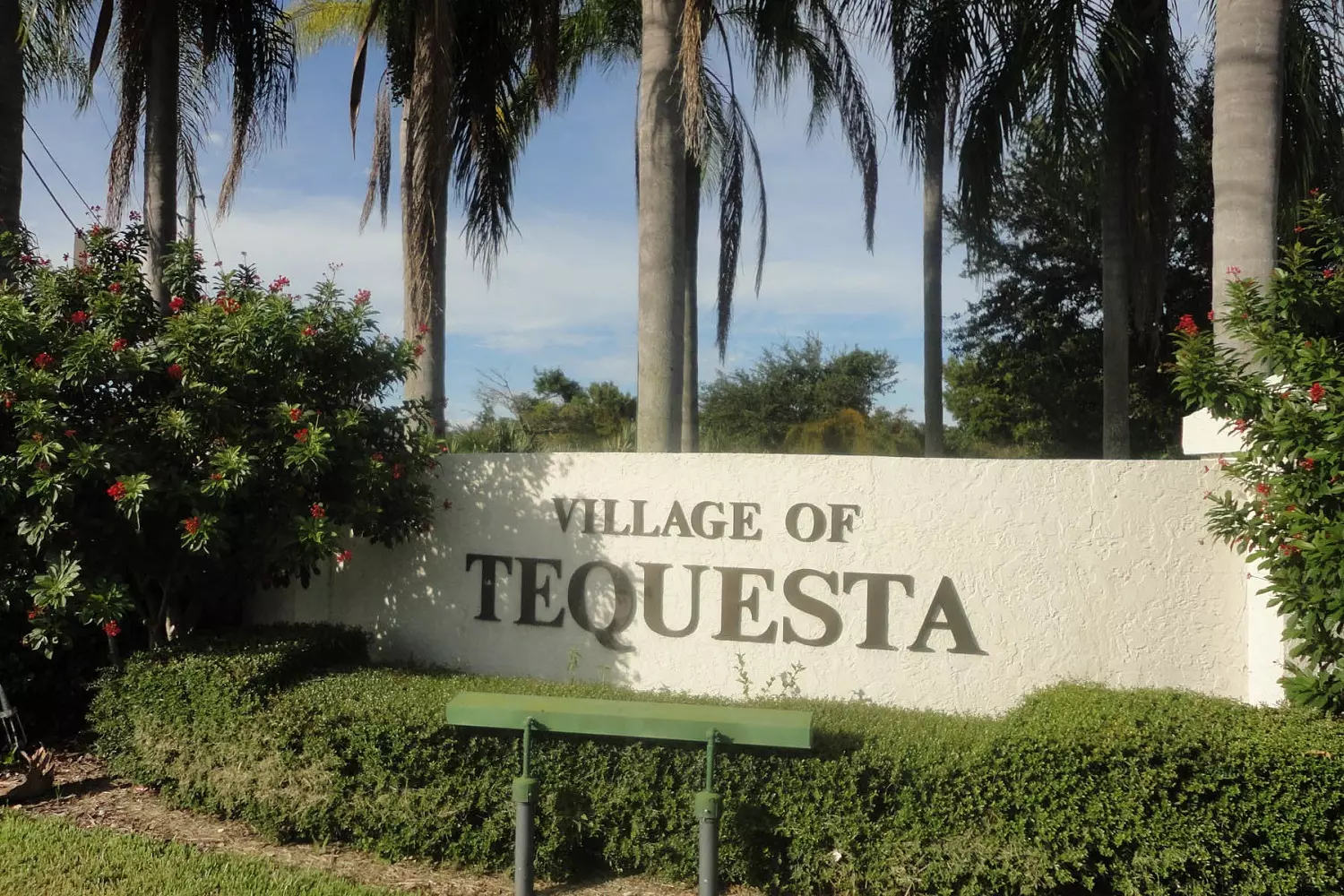
The Tequesta did not build cities, but they did have permanent settlements. They buried their dead on elevated ground or in specially created earthen mounds. Some of these burial sites have been preserved beneath modern streets and buildings.
The first contact with Europeans occurred in the early 16th century. The Spanish, who landed on the coast, were met with caution. Although the Tequesta were not a warlike tribe, they were distrustful of strangers. Diseases brought by the Europeans, as well as conflicts and the slave trade, gradually led to the tribe's disappearance. By the 18th century, they had almost completely vanished as an independent culture.
Today, only archaeological finds and the names of some places remind us of the Tequesta. Their trace in the region's history has been lost beneath layers of development, but the significance of their presence cannot be overstated — it is with them that the human history of this coastline began.
The First Europeans and Spanish Colonization
When Spanish ships first approached the coast of South Florida in the early 16th century, they found themselves in a world whose existence was unknown in Europe. Fertile waters, a tropical climate, and strange peoples — it all seemed mysterious and dangerous.
The first documented evidence dates back to 1513. It was then that the Spanish explorer Juan Ponce de León arrived in the territory later named Florida. There are suggestions that he also landed in the area of future Miami. Although the exact coordinates were not recorded, Spanish sources mention contacts with the Tequesta tribe.
The goals of the Spanish were:
- The search for gold and other resources.
- The expansion of the Spanish crown's influence.
- The spread of the Catholic faith.
However, these goals were difficult to achieve in the conditions of South Florida. Tropical wetlands, high humidity, resistance from local tribes, and diseases quickly showed that the region was not easy to develop.
The Spanish attempted to establish a permanent presence in the Miami area:
- In the 1560s, a Catholic mission appeared on the site of the future city, but it did not last long.
- At the end of the 16th century, new missionaries were sent here, but they also left the territory after a conflict with the Native Americans.
- In the 17th century, the Spanish continued to consider Florida their own, but they had no real control over the region.
Despite the weak development of the territory, the Spanish crown officially included this part of the continent in the Spanish Empire. South Florida became part of what was known as Spanish East Florida. Miami as a separate settlement did not yet exist — these were wild lands with rare temporary camps of missionaries and soldiers.
Edward Lindskalnin Coral Castle
The Spanish left behind not only names but also the legal foundation for the future colonial system. Land ownership rights, the spread of Catholicism, and the model of governance all became the basis for subsequent settlers.
It was only two centuries later that English-speaking colonists began to arrive here, but it was the Spanish who were the first Europeans to set foot on this land. And although their presence was brief and unstable, it influenced the formation of Miami's future history.
Miami in the 19th Century: The Road to Development
Even at the beginning of the 19th century, the area where Miami sprawls today remained practically deserted. Swamps, dense thickets, and heat did not attract settlers. Occasionally, fishermen, hunters, or soldiers would venture here, but there were hardly any permanent settlements.
After Spain ceded Florida to the United States in 1821, the U.S. government gradually began to develop the new territories. However, there was no significant interest in the southern part of the peninsula — most people considered it unsuitable for life.
What hindered development:
- Humid climate and diseases.
- Remoteness from major trade routes.
- Lack of roads and infrastructure.
- Difficult relations with Native Americans.
In the mid-century, military conflicts with the Seminole tribe began in the region. The American army built several forts, including Fort Dallas on the banks of the Miami River. It became an important point during the Second and Third Seminole Wars. Later, the construction of the future city began on the site of this fort.
Key events of the 19th century:
- 1836 — The establishment of Fort Dallas.
- 1840s–1850s — Small settlements along the coast.
- 1870s — The beginning of land clearing for farms.
- 1880s — The appearance of the first permanent houses and plantations.
One of the key figures in the development of the area was Julia Tuttle, a landowner on the north bank of the Miami River. She moved to these parts in 1891, seeing the potential in them. Her efforts became decisive for the future development of the region.
The main problem remained isolation. Without a railway or ports, Miami could not become a city. It was then that Julia Tuttle approached the railway magnate Henry Flagler. She offered him to extend the railway line to Miami and even gave him part of her land.
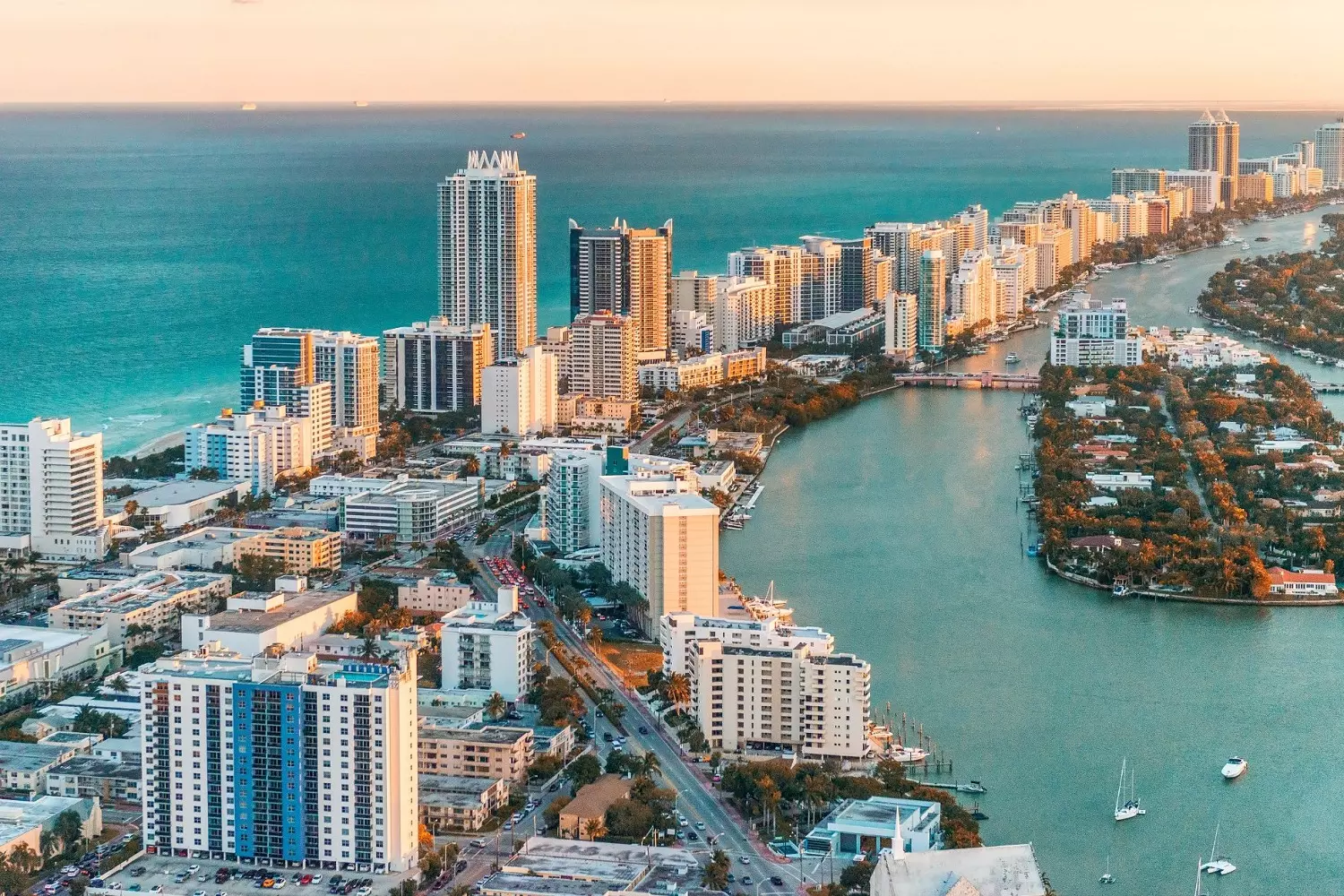
In 1896, the railway finally reached the city. This year is considered the official founding date of Miami. At the same time, the first city government was registered, and the construction of streets, hotels, and piers began.
The 19th century ended for Miami with a transition from a remote southern area to a young but promising city. The railway opened the way for development, tourism, and investment. Everything else was just a matter of time.
The Birth of Miami Beach
Today, Miami Beach is a separate city renowned for its famous beaches, expensive hotels, and vibrant nightlife. But as late as the end of the 19th century, this area consisted of swampy islands covered in mangrove trees. Getting there was almost impossible, and living there was considered impractical due to high humidity, insects, and the lack of fresh water.
The First Attempts at Development
For a long time, the islands between the mainland and the Atlantic Ocean were used only by local fishermen and landowners who owned vast tracts of land on the mainland. One such owner, James Lummus, became interested in the early 1890s in the idea of turning the coastal lands into a resort. However, truly serious steps towards development began later.
The key figure who played a crucial role in the emergence of Miami Beach was Carl Fisher, an entrepreneur from Indiana who had previously been involved in automobile roads. He saw the potential of this area as a year-round resort for wealthy tourists.
What Carl Fisher did:
- Purchased land on the islands and began draining it.
- Built the first road connecting the islands to the mainland.
- Constructed the first bridge across Biscayne Bay.
- Attracted investors and began large-scale hotel construction.
By the early 1910s, the first hotels, private homes, and well-maintained beaches had already appeared here. Miami Beach quickly became a popular vacation destination. Tourists from the northern USA, seeking a warm climate in winter, flocked here particularly actively.
In 1915, Miami Beach received city status. This allowed for the development of infrastructure and the attraction of more funds. The city began to grow rapidly — streets, promenades, electricity, water supply, and public transport all appeared within a few years.
What attracted people to Miami Beach:
- Warm climate year-round.
- Wide sandy beaches.
- Luxurious hotels and villas.
- Proximity to Miami and convenient railway connections.
By the 1920s, Miami Beach was already a fashionable resort. Stars, entrepreneurs, and politicians vacationed here. Construction in the Art Deco style began, which would later become the architectural symbol of the city.
The birth of Miami Beach is an example of how natural difficulties did not stop an idea. Instead of swamps, one of the most famous beach resorts in the world emerged. It all started with a couple of bridges, an ambitious plan, and the confidence that this would be a city that people from all over the world would want to visit.
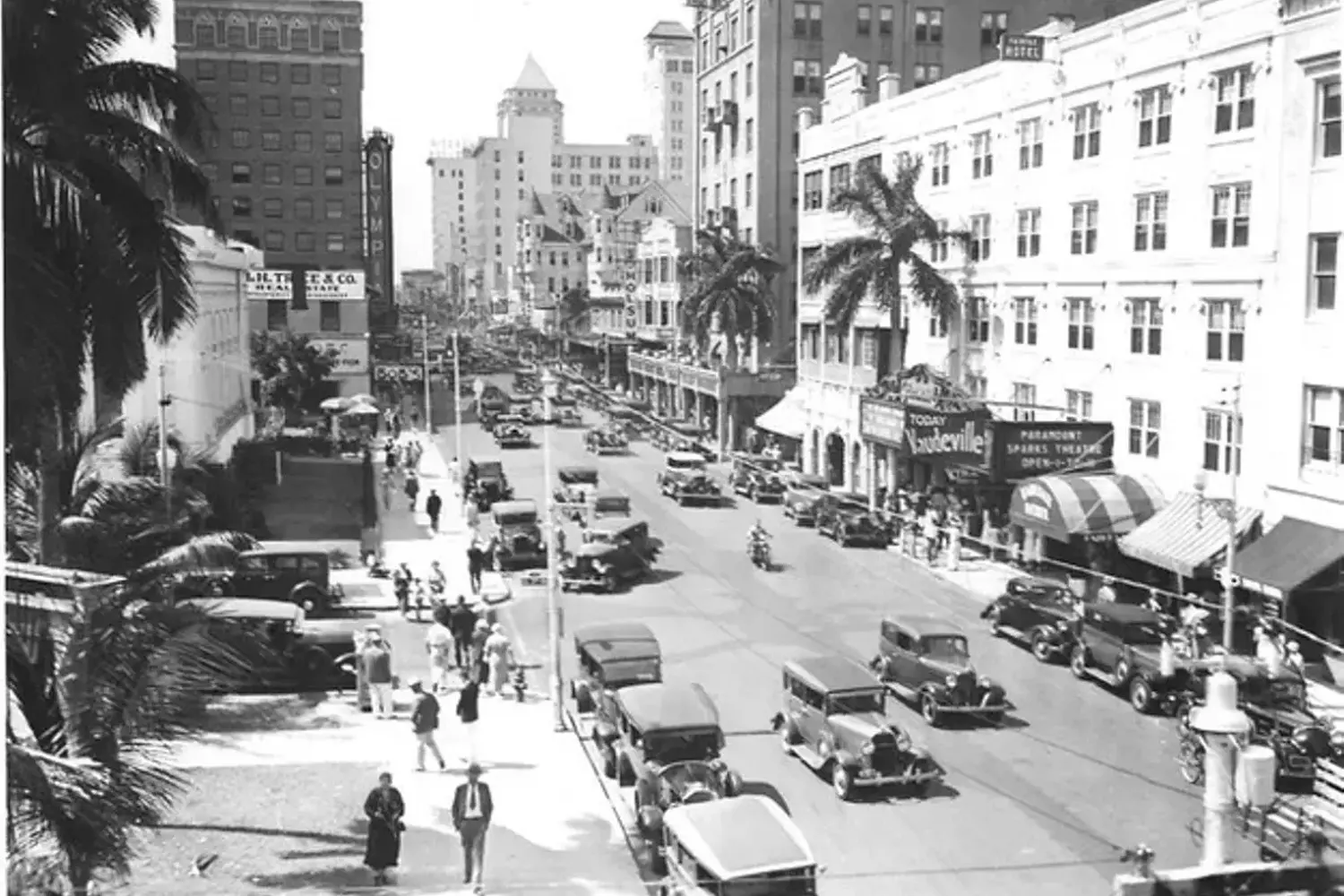
The Flourishing of the 1920s and 1930s
Following the end of World War I, Florida found itself in the spotlight for Americans tired of the cold, gray cities, and the tensions of recent years. The southern part of the state, including Miami and Miami Beach, was perceived as an exotic, warm, and almost fairytale-like place.
In the 1920s, the region began to change rapidly. Literally within a single decade, luxurious hotels, villas, roads, parks, and promenades appeared here. Miami and Miami Beach became symbols of the good life, entertainment, and new opportunities.
The Building Boom
The city began to grow at an incredible rate. Land was bought and resold multiple times a week. People invested money in plots without even seeing them. Mansions, hotels, and shopping streets were built. Miami Beach developed particularly rapidly, where investors were creating a fashionable resort modeled after European and Californian seaside towns.
During this period, the unique architectural appearance of the city took shape. In Miami Beach, buildings in the Art Deco style began to be constructed, characterized by simple geometric forms, bright facades, and unusual elements. This style is still preserved in the South Beach area and is considered the city's hallmark.
Key features of the period:
- Mass construction of housing, hotels, and entertainment venues.
- Active development of transport infrastructure.
- Influx of new residents and tourists from all over the country.
- Expansion of beaches, parks, and public spaces.
- The emergence of golf clubs, tennis courts, and yacht clubs.
Significant events:
- 1925 – Miami's population tripled compared to the beginning of the decade.
- 1926 – A devastating hurricane that caused serious damage to the city but did not stop its development.
- Late 1920s – The opening of new hotels, casinos, and theaters, an influx of movie and sports stars.
Miami at that time was often compared to Hollywood. Films were shot here, social events were held, and fashion shows were organized. People came not only to relax but also to be part of a new culture where everything was bright, expensive, and free.
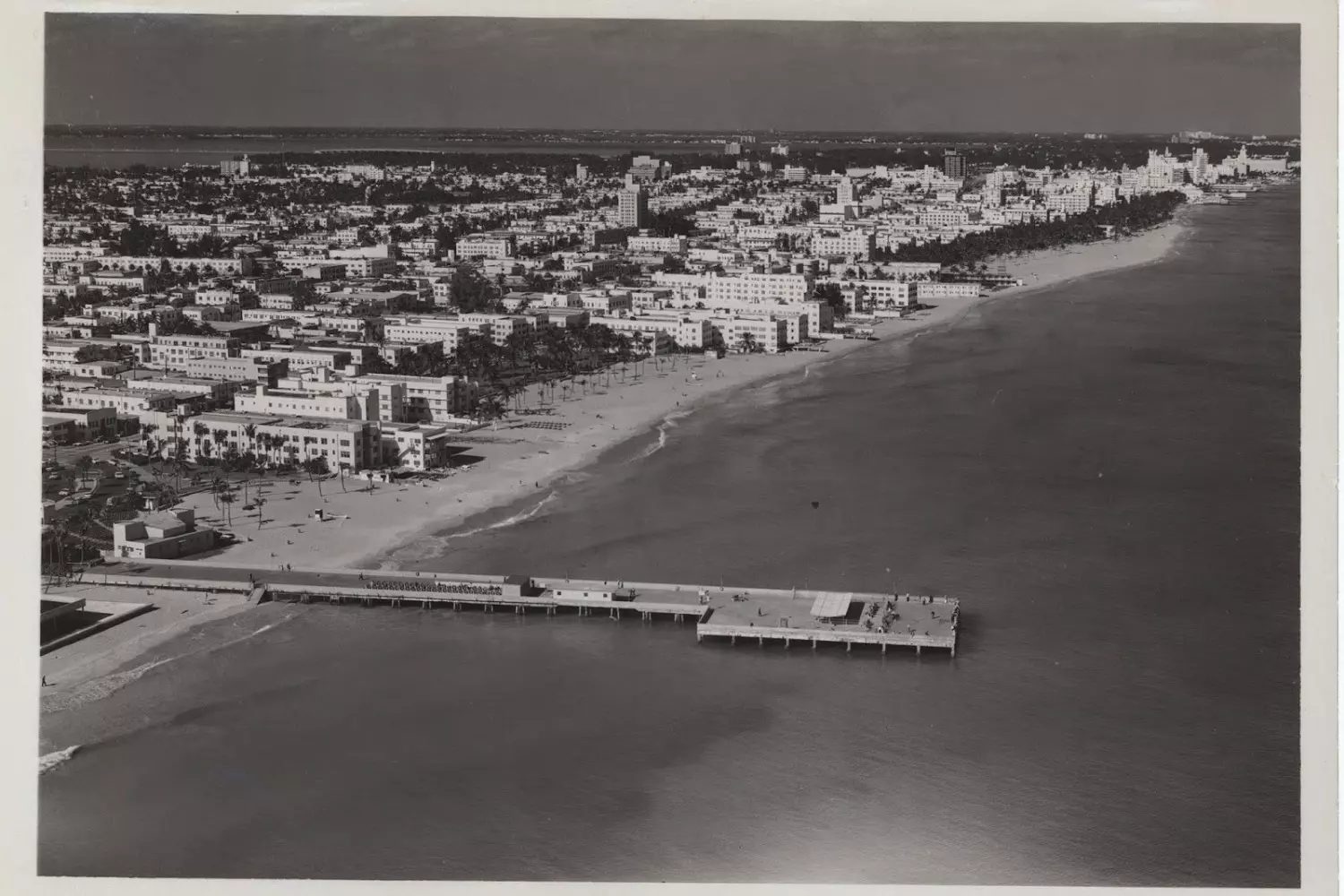
The Great Depression
In 1929, the US stock market crashed, and the Great Depression began. This hit Florida hard. Many construction projects were frozen, land prices fell, and the flow of tourists decreased. However, Miami managed to hold on.
The resort remained in demand, especially among wealthy citizens who continued to seek a warm coast even during the crisis.
Despite the economic difficulties, it was during this period that the foundation for the future popularity of Miami and Miami Beach was laid. The style, atmosphere, and rhythm of life — all of this emerged then and became part of the region's cultural code.
The 1920s and 1930s were a turning point. The city ceased to be just a southern point on the map. It became a symbol of a new way of life — vibrant, open, and free from conventions.
The Post-War Years and Immigration
After the end of World War II, Miami and Miami Beach once again found themselves in the spotlight. The US economy was growing rapidly, and a new chapter was beginning in the life of the country—peaceful, confident, with an emphasis on comfort and leisure. It was then that Florida became a mass tourist destination, and Miami a city where many wanted to move.
Tourism, Construction, and New Residents
In the 1950s, a flood of tourists poured into the region. Air travel developed, new hotels opened, and the beaches became wider and better equipped. Miami Beach was transforming into a full-fledged resort, where not only Americans vacationed, but also guests from abroad. Many of them stayed here permanently.
At the same time, the suburbs were actively being built up, and schools, hospitals, and shopping centers appeared. The city grew not vertically, but horizontally — unlike the northern metropolises, there was enough land here to build cottages, small apartment buildings, and villas.
Cuban Immigration
A pivotal event for the city was 1959 — the rise to power of Fidel Castro in Cuba. After the revolution, thousands of Cubans began to leave the island and resettle in the United States. Miami was the closest point for them.
The first waves of refugees were predominantly representatives of the middle and upper classes who were fleeing nationalization and political repression. Later, workers, peasants, and families joined them.
What changed with the arrival of the Cubans:
- The Little Havana district appeared, becoming the cultural center of the diaspora.
- Spanish became the second most important language after English.
- The atmosphere of the city changed — new cafes, markets, schools, and media outlets emerged.
- Economic activity increased — Cubans opened businesses and engaged in trade.
Immigration continued in the following decades. Not only Cubans came here, but also Haitians, Nicaraguans, Colombians, and Venezuelans. Miami gradually transformed into a city with a pronounced Latin American character.
Social and Cultural Changes
The post-war years made Miami a multicultural city. It was no longer just a resort, but a place where languages, traditions, music, and cuisine mixed. Salsa music filled the streets, and Spanish-language radio stations and newspapers opened.
Miami was changing — both externally and in its essence. The city became a center of immigration for the entire Caribbean region and South America. It welcomed millions of people, gave them work, housing, and the opportunity to start over.
There were, of course, difficulties — social tensions, a shortage of schools, and conflicts between different groups. But the city coped. And by the end of the 20th century, it was precisely because of immigration that Miami became what we know it as today: vibrant, noisy, warm, Latin American in its rhythm, but American in its spirit.
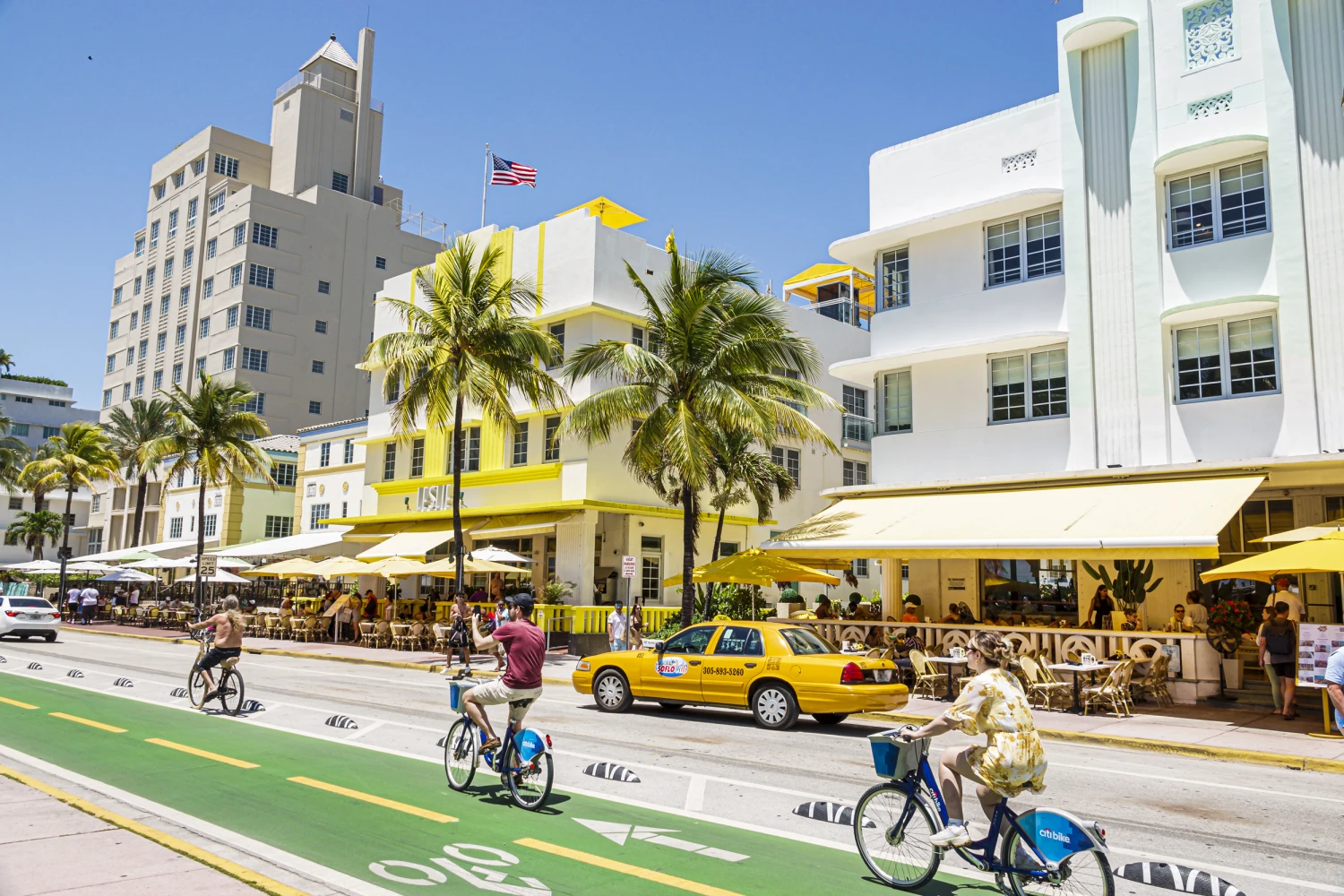
Miami Today
Today, Miami is one of the most recognizable cities in the USA. It's known for its atmosphere, beaches, palm trees, modern districts, festivals, nightlife, and vibrant cultural makeup. Americans, Cubans, Haitians, Venezuelans, Argentinians, Russians, Jews, Colombians — dozens of nationalities speaking different languages, but together creating a unified urban environment — live here.
The city has grown in every sense — in height, in breadth, in population, and in significance. Finance, international trade, technology, fashion, and design are developing here. The Brickell area has become a center for banks and skyscrapers, while Wynwood is an art space where artists decorate entire blocks.
Miami Beach, although separated by water, remains connected to the city and continues to be a place where millions of people live, vacation, and take photos every year.
What has been preserved from the past:
- The historic Art Deco architecture in the South Beach area — it is carefully protected and restored.
- The old railway station and streets that appeared at the beginning of the 20th century.
- Neighborhoods founded by the first settlers, such as Coconut Grove and Coral Gables.
- The Cuban heritage — traditional sandwiches are served in cafes, Spanish is spoken on the streets, and dominoes are played in the parks.
- Local respect for the founders — the names of Henry Flagler, Julia Tuttle, and Carl Fisher are not forgotten; streets, schools, and even bridges are named in their honor.
Miami continues to change, but it doesn't lose its roots. Its past is not hidden under glass — it is woven into every neighborhood, into every detail. This is a city that grew out of a swamp, survived hurricanes, construction booms, migration waves, and economic crises. But all of this did not destroy it, but only made it more interesting.
Thus, the history of Miami is a journey from Native American settlements to a multi-million metropolis. From a swampy shore to one of the most vibrant cities on the map of the USA. And although it has long since stepped into the future, Miami still retains the imprints of all those who created it.














